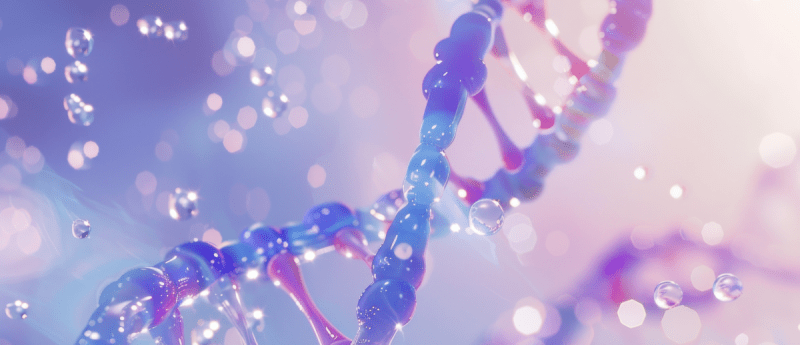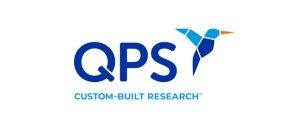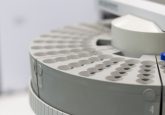RadioADME studies of oligonucleotides: an interview with Deborah Watson

In this expert interview, we speak with Deborah Watson, Group Leader of DMPK (in vivo) at QPS (DE, USA), to explore the crucial role of radioADME studies in drug development. With extensive experience leading preclinical mass balance and tissue distribution programs for both small molecules and oligonucleotides, she shares valuable insights on study design, operational challenges and the complementary role of advanced bioanalytical tools like LC–HRMS and QWBA.
 Deborah Watson
Deborah Watson
Group Leader, DMPK (in vivo)
QPS
Dr Watson is currently the Group Leader of DMPK (in vivo) at QPS and has 20+ years of experience with rodents used in preclinical ADME, biological, and behavioral neuroscience research. Dr Watson is responsible for all non-radiolabeled and radiolabeled mass balance/excretion, pharmacokinetics, whole body autoradiography and microautoradiography studies for both small and large molecules performed in DMPK.
- Could you describe the role of radioADME studies in drug development?
- How do you interpret radioADME data to assess drug exposure and potential toxicity?
- What are some of the key considerations when designing a radioADME study for oligonucleotide therapeutics that have plasma and tissue half-lives in the range of 4 hours and 300+ hours, respectively?
- Can you describe how oligonucleotide therapeutics radioADME studies have evolved over the years?
- Do you foresee any emerging trends in the oligonucleotide therapeutics radioADME space? Will other techniques, such as imaging mass spectrometry (IMS) or LC-HRMS, replace radioADME in supporting drug discovery and development?
Could you describe the role of radioADME studies in drug development?
Drug companies perform ADME studies as an integral part of the drug discovery and development process. These studies establish the fundamental drug metabolism and pharmacokinetics (DMPK) properties of a drug candidate, such as absorption, bioavailability, protein binding, distribution, exposure, metabolism, excretion, clearance, half-life and volume of distribution. Radiolabeled ADME (radioADME) studies provide a detailed assessment of the mass balance and excretion, pharmacokinetic (PK), tissue distribution, and metabolic properties of drug candidates in support of regulatory submissions. The radioADME data package drives clinical decisions prior to initiating a radiolabeled human AME study. For example, clinical implications regarding safety, off-target tissue exposure or accumulation, route and rate of elimination of parent drug and circulating metabolites are derived from the radioADME data.
How do you interpret radioADME data to assess drug exposure and potential toxicity?
The radioADME data needs to be interpreted together, along with drug-specific considerations (for example, age-related and gender differences) to fully understand the DMPK properties and identify any potential risks in the safety profile.
The mass balance data determines the overall route of elimination (air, urine, bile and feces) and percent recovery across time. Drugs are eliminated from the body primarily through the liver and kidneys. Biliary and urinary routes of excretion provide an estimate of total absorbed drug. In comparison, biliary and fecal excretion provide an estimate of unabsorbed drug (feces) and metabolites generated from gastrointestinal microflora. Key factors that impact clinical studies can be clarified by the excretion data. For example, the route and elimination profile of a highly plasma protein bound drug candidate can provide critical information for safety considerations in patients with impaired hepatic and renal function.
Drug exposure is determined by quantitating drug concentration in blood and plasma. Many interrelated PK parameters can be determined from the drug concentration in plasma over time, including bioavailability, clearance, volume of distribution, half-life and AUC. Correlating rate and extent of elimination along with the PK profile is essential to design a human AME study. For example, evidence for enterohepatic recirculation can be seen as a late peak in the plasma curve that occurs when metabolites excreted in the bile are reabsorbed into the bloodstream. Furthermore, a drug with a low safety margin and high volume of distribution may pose a toxicity risk due to its longer plasma half-life that extends drug exposure.
Tissue distribution is a PK process that determines where drug-related material is spread throughout the body. RadioADME tissue PK data collected by quantitative whole-body autoradiography (QWBA) provides the total exposure of drug-derived radioactivity in the major organs. These data provide safety information by identifying on-target and, most importantly, off-target interactions throughout the body. Did the CNS drug demonstrate brain penetration? Did the rheumatoid arthritis drug target the joints? Did the liver drug reach the liver? Finally, tissue distribution data confirms whether the drug and any drug-related metabolites have been eliminated or are potentially accumulating within the body.
Drug metabolism is the biochemical modification of a drug into metabolites to enable excretion. Unchanged parent drug and any metabolites are identified in the plasma and excreta collected from a nonclinical mass balance study. These metabolites can be characterized as active, inactive or toxic. RadioADME metabolic data make these distinctions and are essential prior to conducting human AME studies. Clinical considerations based on radioADME metabolism data include evaluating the potential for drug-drug interactions, toxicity or therapeutic response failure. Other factors such as genetic polymorphisms and variability of enzymatic profiles, as well as patients with liver or kidney disease, could alter drug exposure levels in different human populations.
In conclusion, the data collected from preclinical ADME studies illustrate a complex relationship between drug metabolism, tissue distribution, PK and excretion that drives drug development in the clinic.
What are some of the key considerations when designing a radioADME study for oligonucleotide therapeutics that have plasma and tissue half-lives in the range of 4 hours and 300+ hours, respectively?
Oligonucleotide therapeutic drugs (oligos) are designed to target RNA pathways necessary for protein translation in target organs that are impacted in disease states (e.g., hypercholesterolemia, CNS-diseases, muscular diseases, etc.). Administration of oligos may require alternative strategies for study design and collection intervals relative to those commonly used for small molecules. Preliminary biodistribution work in target tissues, such as liver and kidney, are vital to determine tissue and plasma PK time-points used when designing a radioADME study.
A standard mass balance study for a small molecule with a short plasma half-life (< 8 h) should collect urine and feces for a minimum of ~10 half-lives, but most extend to 168 h post-dose to determine the complete elimination and PK profile. A wide range of plasma and tissue half-lives (4–300+ hours) must be considered when designing a radioADME study for oligo therapeutics. Oligos typically demonstrate bi- or tri-phasic PK curves with drug related material transported rapidly from the subcutaneous dose site and distributed to the tissue of interest (typically liver and kidney). The circulating oligo is rapidly eliminated from the plasma (minutes to < 4 hours). However, elimination of tissue-bound oligos can be quite protracted with tissue half-lives extending to 300+ hours.
In terms of mass balance, it is not feasible to maintain urine and feces collections for 3000+ hours (10 t1/2 x 300 h), primarily due to animal welfare concerns. Animal health status must be monitored for development of foot sores and urine volumes. Operationally, the metabolism cages can become obstructed due to accumulation of fur, dander and food particles, and therefore become unable to separate urine from feces after only ~1-2 weeks of use. Regarding bile collections, most cannulas are patent for only 72–96 h post-dose (168 h maximum).
Oligo mass balance studies will be shorter than the ideal 10 half-life rule of thumb (typically ~8 weeks or 1344 hours), metabolism cages must be swapped out regularly, and the health status of animals should be monitored daily (e.g., urine volumes, foot sores, etc.). Due to slow elimination, excreta samples should potentially be pooled to ensure detectable concentrations prior to analysis. If total recovery of radioactivity is < 90%, carcasses should be processed to determine the amount of tissue-bound radioactivity. After processing carcasses, if total recovery remains < 90%, collection of expired air from a separate group of animals is recommended to determine whether volatilization of 14CO2 occurred.
These operational considerations are essential for a well-designed oligo radioADME study, which comes from many years of experience performing these studies.
Can you describe how oligonucleotide therapeutics radioADME studies have evolved over the years?
Our experience with oligo radioADME studies at QPS has evolved considerably over the last 15+ years. Early radioADME studies often used 32P and 35S isotopes. Nowadays, it is more common to use longer half-life isotopes such as 3H and 14C (predominantly 14C) for both ASO and siRNA. Initially, excreta samples were processed daily to determine the study duration to reach mass balance. Our early ADME experiences were crucial for establishing the appropriate study design for oligos with respect to study duration and sample collection for 8+ weeks post-dose.
Do you foresee any emerging trends in the oligonucleotide therapeutics radioADME space? Will other techniques, such as imaging mass spectrometry (IMS) or LC-HRMS, replace radioADME in supporting drug discovery and development?
I do not see other major analytical techniques replacing the core set of radioADME studies in the near future, but they do complement each other to answer different questions. Early biodistribution studies with LC–HRMS in liver, kidney, CSF/brain, muscle, plasma and urine are critical to understanding the PK properties of oligos and guide future radioADME studies. A combination of these techniques is necessary to distinguish between whole tissue vs. cellular-level tissue distribution of the parent and metabolite, etc.
QPS continues to be at the forefront of performing radioADME studies with small and large molecules, peptides and oligo therapeutics. I look forward to evaluating the next generation of oligos and seeing what outcomes can improve with this exciting and versatile drug development tool!
The opinions expressed in this interview are those of the interviewee and do not necessarily reflect the views of Bioanalysis Zone or Taylor & Francis Group.
This content was produced in association with QPS Holdings LLC.






